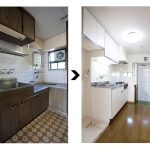A rubber rheometer is important in the production of rubber to determine the specific properties, the elastomeric properties, as the rubber goes through the vulcanization process.
This vulcanization process involves the addition of specific polymers and additives to the natural rubber during processing. These additives and polymers are responsible for creating bridges or links between the chains in the rubber and polymer combination, resulting in a stronger, more durable “cured” rubber product.
The use of the rubber rheometer during the process allows for quality control as well as a full understanding of what the properties of the fully cured rubber will be once completed. There are two basic types of testing options used, both with their own unique features and functions.
The Two Options
The rheometers used in rubber production are either the oscillating disc rheometer (ODR) or a moving die rheometer (MDR). Both will start with a sample of the rubber placed into a sealed chamber of the testing equipment or between plates. This is then heated to a very specific temperature based on the polymers and additives as well as the rubber in use.
With the ODR the interior of the cavity then oscillates through a motor that controls the movement. As the material in the cavity or compartment cures, it requires more torque to move the rotor. This change in torque converts to a change in shear strain that can be measured with the curing process.
With the MDR the rubber sample is pressed between two plates that then move back and forth in an oscillating motion. The pressure and the movement are measured, resulting in measurements throughout the curing process.
Both of these types of rubber rheometer options can be fully computer operated with software that allows the technicians to pre-set temperature, torque and even the number of readings per time period required.





